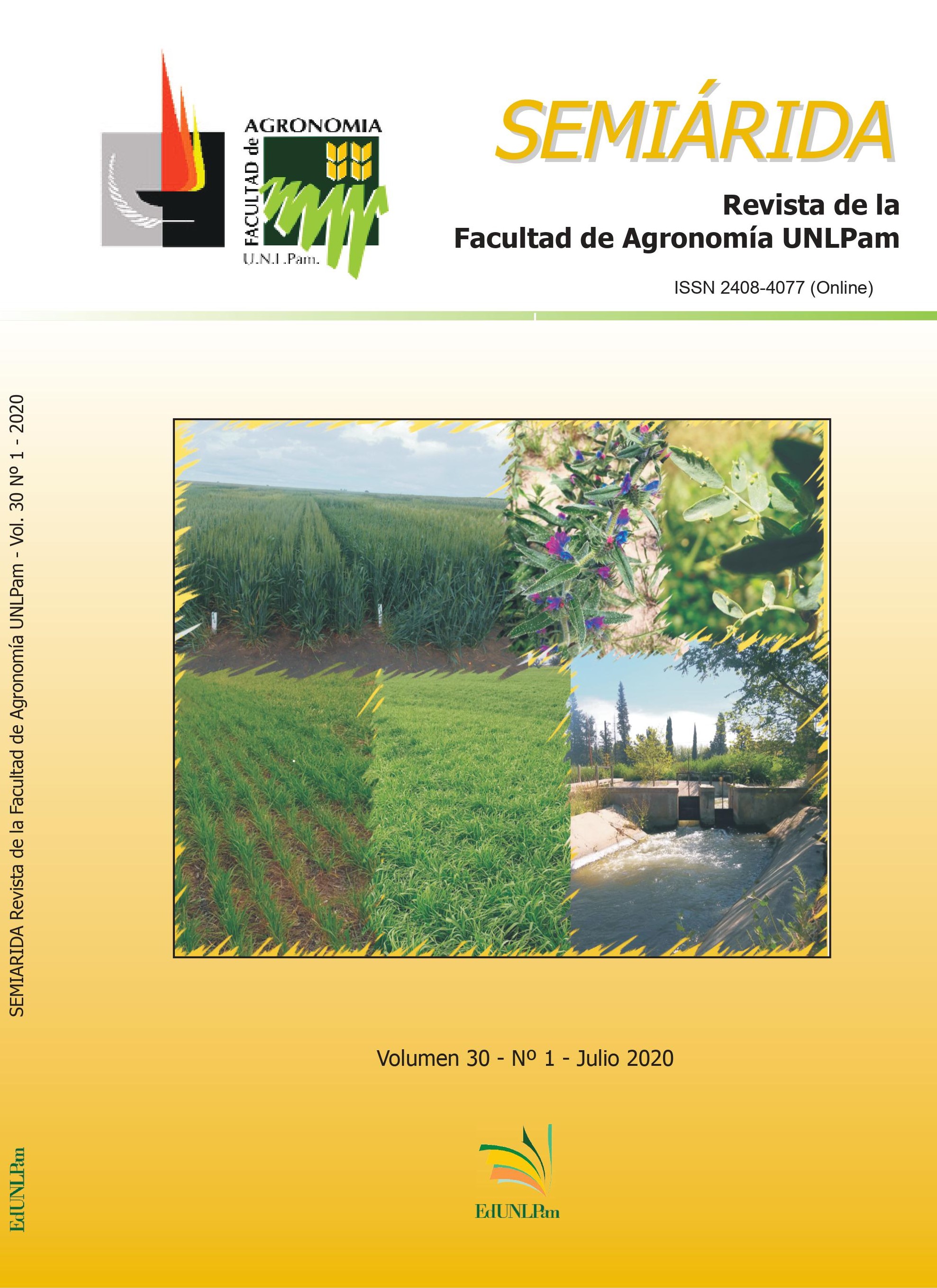Nitrogen fertilization in rye (Secale cereale) used as a cover crop
Keywords:
Semiarid region, Entisol, Soil nitrogen, WUE, CornAbstract
In order to evaluate the effect of nitrogen fertilization on rye used as cover crop (CC), under the hypothesis that aerial biomass production is conditioned by the availability of nitrogen in the soil, being the this influence significant on the Water Usage Efficiency (WUE), randomized block tests were established in four replications with the following treatments: fallow (B) without CC, unfertilized CC (T) and fertilized with 40 (40N), 80 (80N) and 120 kg N.ha-1 (120N). Soil moisture, N-NO3 - in soil (0 - 60 cm) and aerial biomass were determined with the aim of evaluating the incidence of different fertilization rates on dry matter (DM) production and WUE of rye used as CC, and to establish the productivity of the corn successor crop on the T and on the fertilized treatments. The results obtained in the 120N treatment were: CC DM production of 6447 kg.ha-1, WUE of 23 kg DM ha-1.mm-1, and corn production of 12170 kg.ha-1. While for the T treatment the DM production was 3815 kg.ha-1, the WUE was 13 kg DM.ha-1.mm-1, and the corn production was 9475 kg.ha-1, showing statistically significant differences between both treatments. The fertilization of the CC seems to be a viable alternative for the semi-arid Pampean Region as it has shown positive results in biomass production and in WUE. Corn crop productivity would be higher over fertilized CC compared to unfertilized CC. The decomposition of the CC residues could be responsible for the higher production, where the C/N relation plays an important role in the dynamics of degradation and in the supply synchronization of N in relation to the demand of the corn crop.
Director: Quiroga, Alberto Raúl - Co Director: Fernández, Romina
Downloads
Downloads
Published
Issue
Section
License
La Editorial de la Universidad Nacional de La Pampa (EdUNLPam) exigirá a los/as autores/as la firma del siguiente documento:
La EdUNLPam lleva a cabo la publicación del artículo: (Título del Artículo) en SEMIÁRIDA Rev.Fac.Agron UNLPam ISSN 2362-4337 (impresa) ISSN 2408-4077 (en línea), del cual el/los abajo firmantes son autores de una o más partes. En el mismo acto, el/los autores entregan exclusivamente a la EdUNLPam todos sus derechos protegidos por las leyes de propiedad intelectual que rigen en la Argentina para reproducir, publicar, editar, fijar, comunicar y transmitir públicamente en cualquier formato o medio impreso o electrónico, inclusive internet, el artículo enviado a publicación e incluirlo en índices o bases de datos nacionales e internacionales. A cambio, la EdUNLPam entrega a los autores la autorización para la publicación o reimpresión con ines académicos y educativos en cualquier libro o medio de divulgación, con la sola obligación de citar el artículo original publicado en la EdUNLPam. Cada autor acuerda en que el material provisto a la EdUNLPam es un trabajo original, que no ha sido impreso o publicado en cualquier otro medio con anterioridad y que no vulnera derechos de terceros. El Primer autor tendrá la posibilidad de leer y corregir el artículo ya editado como “prueba de galera”, pero si el autor no devolviera esas correcciones de la prueba de galera dentro del tiempo especificado, el proceso de producción y publicación podrá proseguir sin la aprobación del autor. El/los autor/es no recibirán compensación monetaria de la EdUNLPam por el uso del material contenido en este artículo y asumen la responsabilidad de las opiniones vertidas en él.






.png)



22.png)



.jpg)




.jpg)
